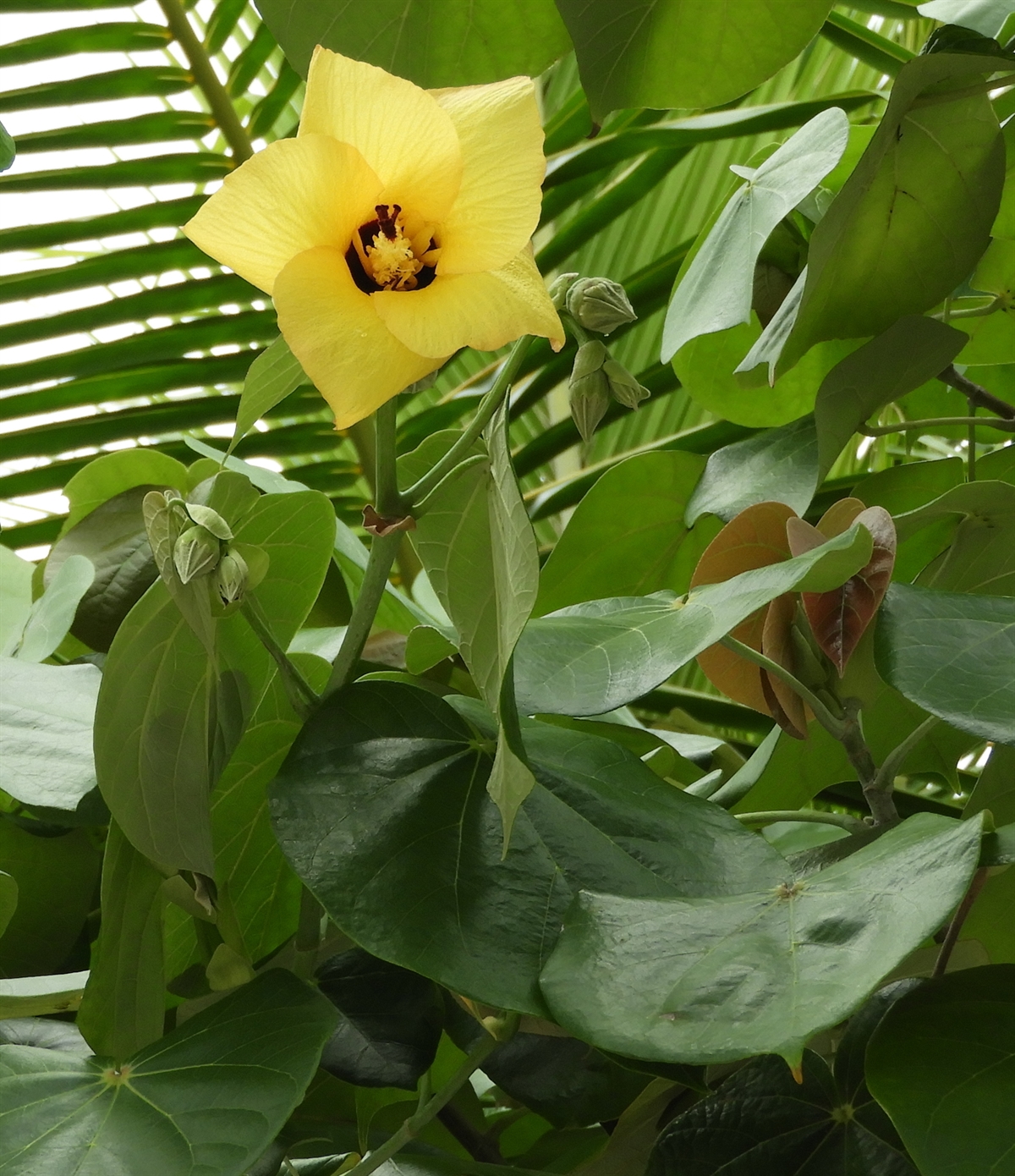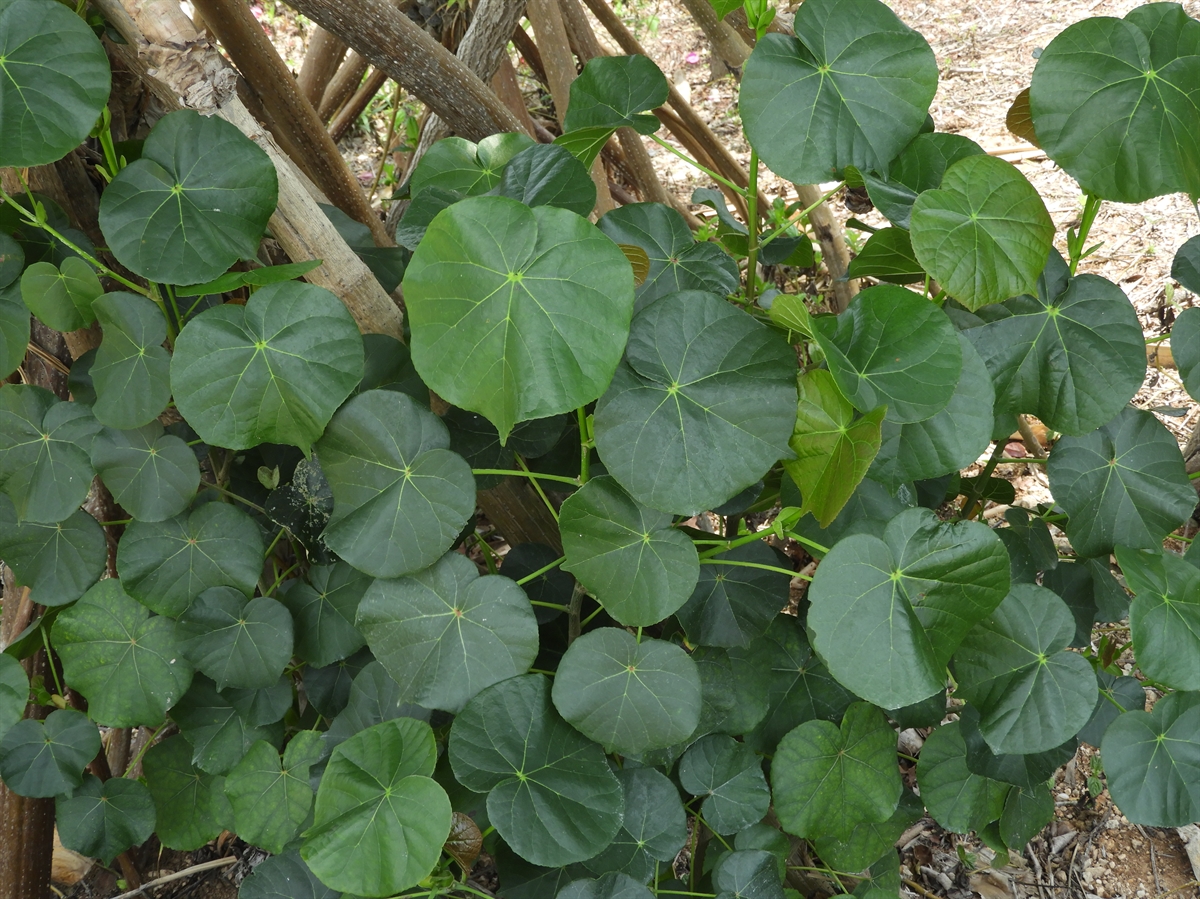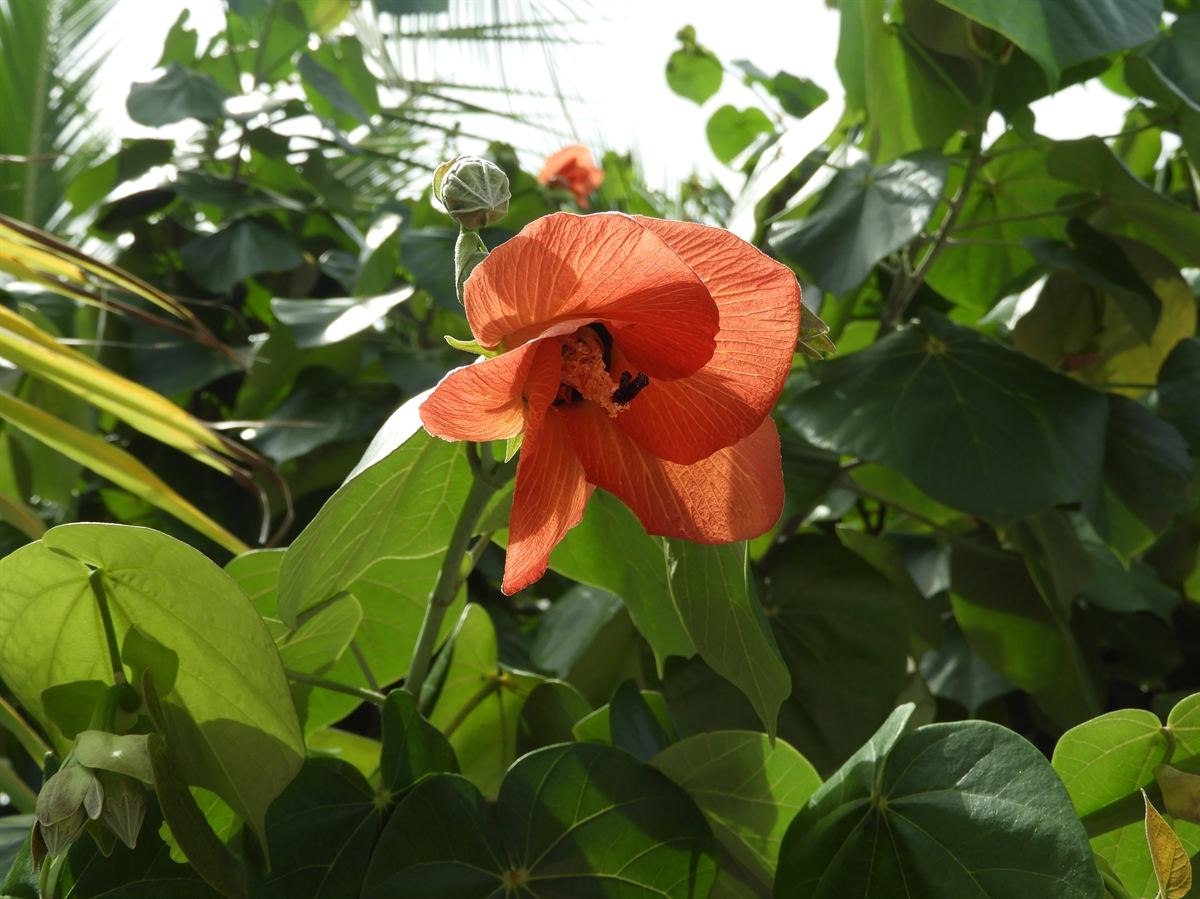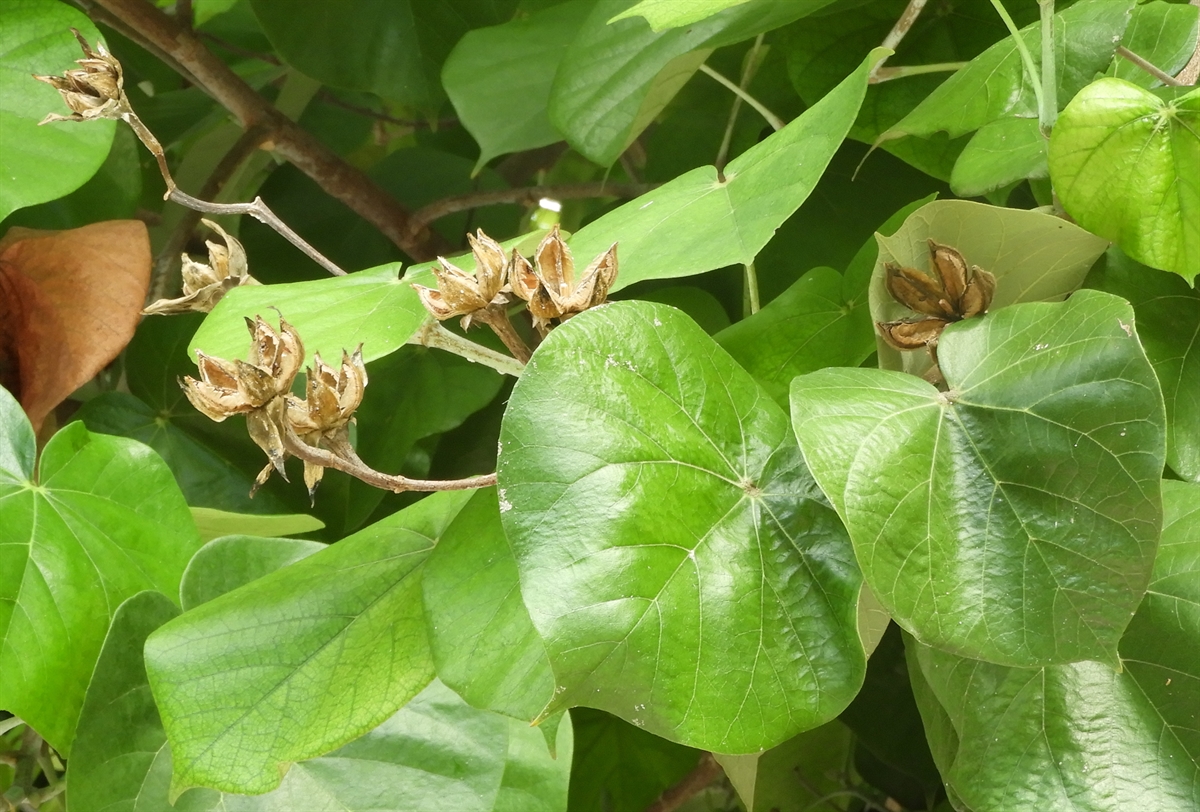Habit: Hibiscus tiliaceus grows as a tree to 15 m. in height. The leaves are arranged alternately, to 15 cm long, ovate to orbicular, acute/acuminate leaf apex, an entire to crenate leaf margin and cordate base. The abaxial leaf surface with stellate pubescent. The adaxial surface is glabrous.
The complete, perfect, actinomorphic flowers are solitary in leaf axils. The calyx has 5 green, fused sepals forming a shallow cup. The corolla has 5 yellow, fading to orange/red, fused petals each with a dark spot at their base. The edges of the petals overlap forming a pinwheel shape. There are numerous stamens that are fused forming a tube around the style. The ovary is superior with 5 locules and numerous ovules. The fruit is a woody capsule that is brown at maturity breaking apart rather than splitting along suture lines. The parts of the flower including fruit are pubescent.
Habitat: Hibiscus tiliaceus grows in saline and coastal environments primarily in areas that may be brackish such as the back of Mangrove areas or behind Rocky Shores and Dunes.
Distribution: Hibiscus tiliaceus is NOT native to the Lucayan Archipelago but now occurs throughout the islands. It is native to Africa, Asia, and the South Pacific but is now widespread in tropical and subtropical regions of the world.
Medicinal/Cultural/Economic usage: Hibiscus tiliaceus is not known to be used medicinally in the Lucayan Archipelago.



